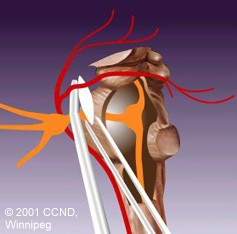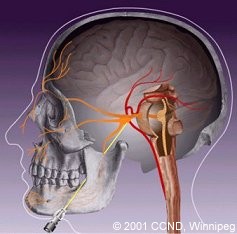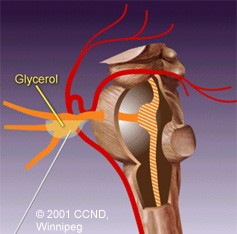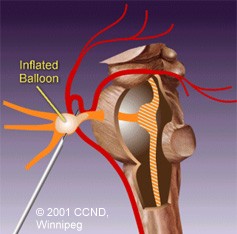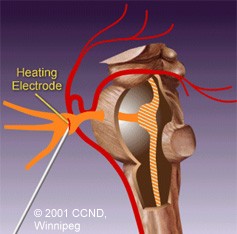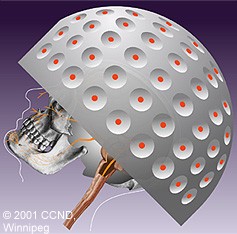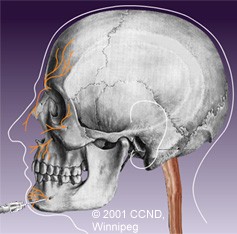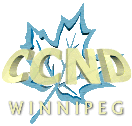
Part Two: Treatment of Trigeminal Neuralgia
III. Surgery
A.
Overview
Neurosurgical
interventions are considered when medical therapy
proves ineffective in controlling TN pain. Each type of surgery carries with
it potential benefits as well as risks of complications or long-term side effects.
Thus, one must select the type of surgery carefully, with a complete understanding
of all possible outcomes. None of the surgical interventions are effective in
every case, and there is no way to accurately predict who will benefit from
which procedure. The results of any procedure are known to be dependent upon
the experience, expertise, and specific techniques unique to the neurosurgery
team. These important variables must be taken into account when selecting a
treatment.
The
various treatment options are summarized and illustrated in the following chart:
| Microvascular
Decompression Surgery alleviates neurovascular
compression by placing inert shredded Teflon® felt implants between
offending vessels and the trigeminal nerve root. |
|
| Percutaneous
Rhizotomies involve inserting a needle through the cheek and into
an opening at skull base (foramen ovale). There, a controlled injury to
the trigeminal nerve and Gasserion ganglion may be produced in one of
three ways: |
|
| 1) Percutaneous
Glycerol Injection - glycerol is injected into the space around
the Gasserion ganglion, and chemically damages the nervous tissue. |
|
| 2) Percutaneous
Balloon Compression Rhizotomy - a balloon is inflated next to
the Gasserion ganglion, compressing and mechanically damaging the nervous
tissue. |
|
| 3) Radiofrequency
Rhizotomy - an electrode is advanced into the Gasserion ganglion,
and heated to thermally damage the nervous tissue. |
|
| Gamma
Knife Radiosurgery focuses cobalt radiation upon the trigeminal
nerve root, producing a delayed injury to nervous tissue that is similar
to that produced by other percutaneous rhizotomy techniques. |
|
| Peripheral Trigeminal
Nerve Blocks, Sectioning and Avulsions involve injuring the peripheral portions of the trigeminal
nerve external to the skull. |
|
| Microsurgical
Rhizotomy involves
surgical exposure and cutting of the trigeminal nerve root near its entry
into the brain stem. |
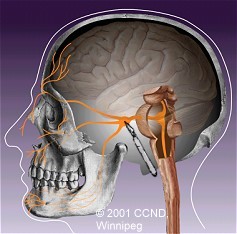 |
Next
Section >>
<< Return to Table of Contents
Click
here to return to the
Trigeminal Neuralgia
Web-Site at the Centre for
Cranial Nerve Disorders
A.
M. Kaufmann & M. Patel
Centre for Cranial Nerve Disorders
Winnipeg, Manitoba, Canada
© 2001
Prepared by A.
M. Kaufmann & M.
Patel
© 2001 Centre for Cranial Nerve Disorders, Winnipeg, University of Manitoba,
Health Sciences Centre. The information provided on this web-site is intended
for educational purposes only, and should not be used to diagnose or treat a disease
or disorder. This information is not intended to substitute, supplement, or in
any way qualify the services or advice provided by a qualified health care professional.
Please consult with a certified health care professional before pursuing any form
of medical action. Duplication in any part or form of this document is strictly
prohibited. All rights reserved. For further information please read our disclaimer.
Web-Site related inquiries can be directed to the Information
Provider.


